Content
Cherry Dayber Black refers to the old proven varieties of crops with high yields. With knowledge of some of the features of planting and caring for a plant, you can collect many juicy, sweet berries from it.
Breeding history
Dyber Black Cherry is the result of accidental pollination that occurred in the Crimea in 1862. The name of the variety was derived from the surname of the gardener by whom it was first described - A. Diber. In 1947, Dyber Black cherry was entered into the State Register. Zoning of the variety: North Caucasian and Lower Volga regions.
Description of culture
Cherry Dayber Chernaya is a large-fruited variety and forms berries weighing 6-7 g. The shape is wide-heart-shaped, slightly tuberous. The seam is clearly visible. Skin color is dark red, almost black. The pulp of the fruit is dark, with a rich red hue, when ripe, it is tender, has an excellent dessert sweet taste with a light, barely discernible sourness.
The pulp is characterized by medium juiciness, the juice is of a bright red saturated color. The fruit stone is large, it separates from the pulp poorly, weighs about 0.45 g and makes up 7% of the total mass of the berry. The peduncle is 40 mm long, wide, easily separated from the fruit.
The cherry tree of Dyber Black is tall, vigorously growing. Its height can reach 6 m. Young shoots are straight, greenish-brown, form inflorescences of 2-3 flowers. The wide-round crown of this tree is distinguished by branching of branches, strong foliage. The leaf is oval-elongated, with a sharp end.
Characteristics
Below are the characteristics of the Diaber Chernaya cherry variety as an assessment of the most important indicators of the culture.
Drought resistance, winter hardiness
Sweet cherry belongs to moisture-loving crops, and the Daibera Chernaya variety is no exception. In a persistent period of drought, it is necessary to increase the frequency of watering.
Cherry Dayber Black does not differ in increased frost resistance - at temperatures below -30 0With severe freezing of shoots, branches, trunk, and at -24 0Almost all flower buds are damaged.
Pollination, flowering period and ripening times
Depending on the region in which the summer cottage is located, the shoots of the Diaber Black cherry are covered with large white flowers in late March - early April. During the flowering period, the plant looks very decorative. Cherry Dayber Black is self-fertile, therefore, in order to obtain a high yield, it is necessary to plant one of the pollinating varieties.
In terms of ripening, this variety belongs to the middle-late - the fruits can be harvested in late June - early July.
Productivity, fruiting
The impressive size of the tree and the size of the berries ensure its high yield. This indicator depends on the region of cultivation and the age of the plant. The most productive are adult specimens - 70-90 kg of berries can be harvested from one tree. Dyber Black's cherry begins to bear fruit in the fifth year after planting a seedling.
Scope of berries
The berries of this cherry variety are consumed mainly fresh. But they are also suitable for processing: you can cook delicious compotes and jams from the fruits.
Disease and pest resistance
The Diaber Black cherry variety has an average resistance to diseases, therefore it is important to carry out preventive measures annually to protect it. Since this cherry belongs to rather old varieties, it is often affected by coccomycosis, moniliosis (fruit rot), and clotterosporia (perforated spot). Especially great damage is done to the Black Dyber cherries during rainy springs.
Advantages and disadvantages
Analyzing the above characteristics of Dyber Black cherry, a number of its advantages and disadvantages can be identified.
The advantages of the variety include:
- high and reliable yield indicator;
- size and dessert taste of berries;
- the benefits and versatility of the use of fruits;
- decorative flowering;
- friendly return of the harvest.
Cons of Cherry Dyber Black:
- average winter hardiness, due to which the plant can be grown in regions with mild winters;
- weak resistance to common diseases of culture;
- limited time for collecting fruits, with delayed removal, they are affected by gray rot.
Landing features
In order for a crop to give high yields, it is necessary to plant it correctly, taking into account the timing, place, planting rules, and also choose the appropriate planting material.
Recommended timing
Cherry seedlings are planted in spring, when the soil thaws and warms up enough, and return frosts will be behind. If you purchase a tree in the fall, you can dig it in at an angle of 450, and put in a permanent place in the spring. In the southern regions, Dyberu Black can be planted in the fall.
Choosing the right place
Sweet cherry grows well and bears fruit on rich, nutritious soils with a light structure, while the tree should be placed in a place well-lit by the sun, where there are no strong cold winds. The roots of the tree reach a depth of 2 m, so it is not planted in a place with a high groundwater table.
What crops can and cannot be planted next to cherries
Sweet cherries and cherries coexist well with each other and somewhat increase each other's yield. In addition, the following types of crops can be planted near them:
- grapes;
- hawthorn;
- Rowan;
- elderberry (protects against aphids);
- honeysuckle.
It is not recommended to plant next to cherries and cherries:
- nightshade crops;
- some trees: linden, oaks, birches, maples;
- some fruit bushes: raspberries, gooseberries, sea buckthorn, currants.
Selection and preparation of planting material
When purchasing a cherry sapling of Diber Black, you need to carefully evaluate its appearance. First of all, its height should correspond to the age: for one-year-old specimens - 70-80 cm, for two-year-olds - about 1 m. You should pay attention to the state of the vaccination. It should be tight, free from damage and fluid release. The bark of the tree over the entire surface should look healthy, if traces of pests and diseases are noticed, it is better to refuse to buy.
You can learn more about choosing a cherry seedling from the video:
Landing algorithm
For planting, you need to dig a hole 80 × 80 cm in size.A layer of sand is laid at the bottom for drainage if the soil on the site is heavy, and clay if light. It is necessary to immediately install the support for the cherries. Next, a nutrient mixture is poured, which includes: 2 buckets of soil, 3 kg of superphosphate, 1 liter of ash, 1 kg of potash fertilizer, 35 kg of humus, 2 kg of ammonium sulfate.
In the center of the planting pit, you need to make a low mound, place the cherries on it, gently straighten its roots and tie it to the support peg. Then, when adding soil, it is lightly tamped so that no air cavities are formed. The seedling is planted correctly if its root collar is at least 3 cm from the ground.
Mulching the trunk circle is carried out after abundant watering. You can use humus, peat, old foliage or sawdust as mulch.
The scheme for planting several cherry trees for pollination provides for the observance of distances between them of 3-5 m.
Follow-up care of the culture
Dyber Black needs elementary care throughout its life cycle.
In the spring, before the beginning of sap flow and swelling of the buds, the crown of the Diaber Black cherry is formed. This culture is formed in 2 tiers: on the first, about 8-9 skeletal branches are left, on the second - 2-3 layers. The central stem of the plant in adulthood is cut at a height of 3.5 m to limit the growth of the tree. Also in the spring, sanitary pruning is carried out - removal of all damaged and frozen branches on the ring.
Preparation for winter consists in carrying out autumn watering of the tree and whitewashing its trunk and thick branches. Young cherries of Dyber Black are wrapped in spruce branches.
Watering and feeding are inseparable in the case of cultivating the Dyber Black cherry. This culture, in favorable weather, in the season needs only 3-4 abundant watering, so they are carried out simultaneously with root dressing. As fertilizers, slurry is applied (proportion 1: 8), complex fruit and berry dressings, ash infusion (ratio with water 1:10). In spring, Dyber Black cherries are fertilized with urea, scattering 60-80 g of granules dry.
There are different ways to protect a fruit crop from rodents: wrapping the trunks with nylon, netting, roofing material, branches of conifers, as well as trampling snow in winter.
Diseases and pests, methods of control and prevention
For clarity, possible diseases and pests of the Dyber Black cherry are collected in tables indicating preventive and therapeutic measures.
Table 1 - Pests
Pest | Preventive measures | Control measures |
Black cherry aphid | Providing official care for cherries, timely fertilization Correct pruning of affected shoots: at least another 10 cm of healthy tissue must be captured. Timely collection of all cut pieces and their incineration. Spring and autumn whitewashing of the trunk | Chemicals: Actellik, Intavir. Folk remedies are effective only with a small number of pests: repelling infusions of tobacco, dandelion, green onions |
Moth | Spring spraying of the tree with "Chlorophos", "Karbofos", other insecticides before bud break | |
Weevil | Chemicals: "Intavir", "Karbofos", "Rovikurt" |
Table 2 - Common diseases
Disease | Signs of the disease | Control measures |
Coccomycosis | At first, small, red-brown spots on the foliage that increase in size over time, while a pinkish-gray bloom develops on the underside of the leaves - fungal spores. Foliage curls and falls | Treatment with fungicides containing copper during swelling of the kidneys: Bordeaux mixture, "Cuproxat", "Abiga-peak", copper oxychloride solution 0.3%. During the flowering period - spraying with "Horus" (3 g per bucket of water). During fruiting - "Fast" (ampoule for a bucket of water). After harvesting - treatment with Bordeaux liquid 1% concentration |
Moniliosis | Drying of leaves, drying of flowers, drying of immature fruits, blackening of branches. The tree looks burnt - the places where the fungus colonizes turns black | |
Clasterosporium disease | The disease manifests itself on foliage, which is covered with reddish spots. Over time, they grow, in the center of each of them the tissue becomes dead and falls out, forming holes with a red border. Over time, the disease spreads to shoots and fruits, forming ulcers, from which juice flows. |
Conclusion
Cherry Dayber Black is recommended for growing in warm regions. With knowledge of the characteristics of the variety, you can get huge yields of sweet large berries from plants every year.
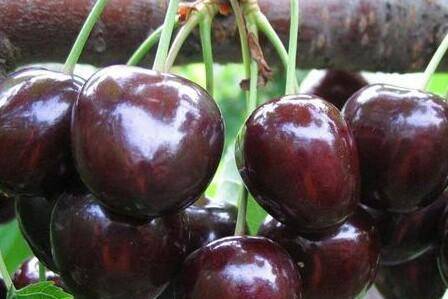
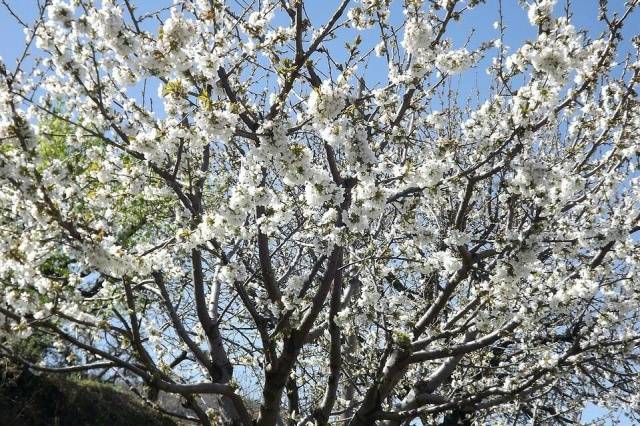
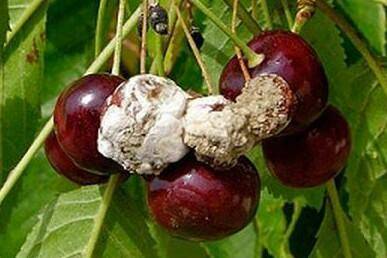
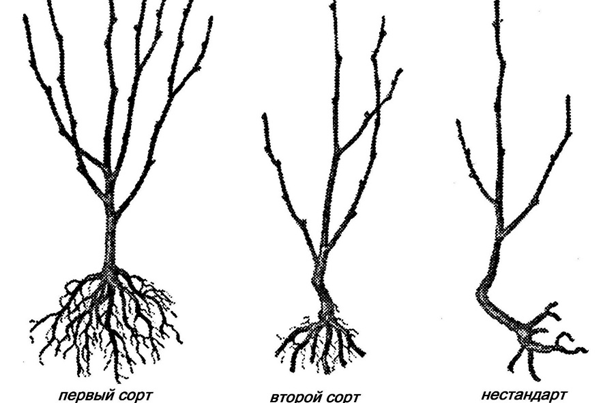
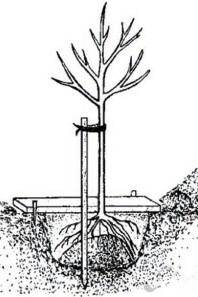
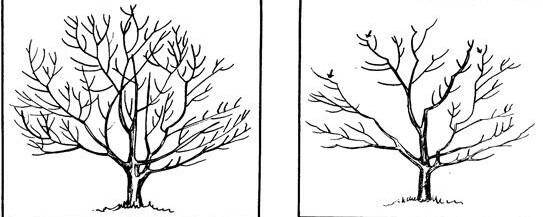


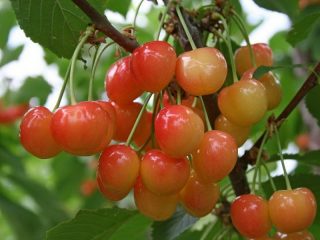

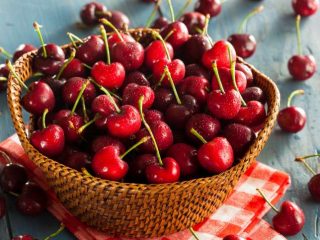

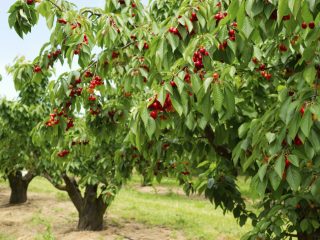

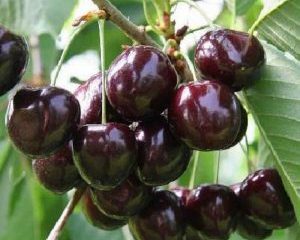
Is it possible to bend the black dyber cherry to the ground for 45 degrees?